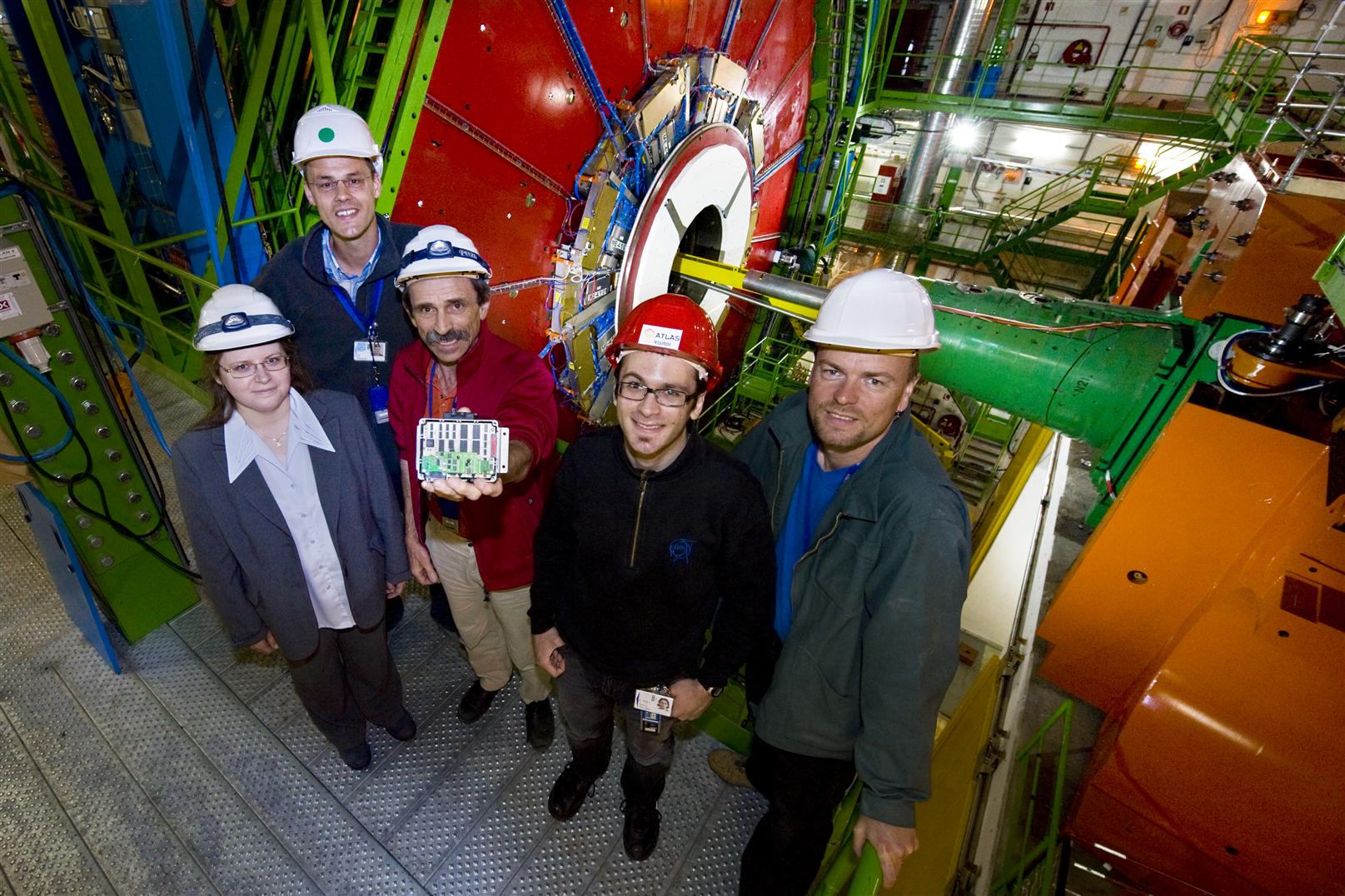Beware the single hit!
The first time that single particle effects from cosmic rays on electronics were observed was in 1991, when one of the instruments aboard an ESA satellite broke down after only five days in space. On 5 July, the TS-LEA group will have completed the installation of monitors that will help to reduce similar dangerous effects on LHC electronics.
In total, 329 radiation monitors have been installed in the LHC tunnel and its experimental areas. They keep a meticulous check on radiation levels all around the ring and, in particular, in the critical parts, such as the interaction points and the sections where the beam is cleaned. It is well known that radiation dose degrades electronic devices, which will typically start to consume more electrical current. For this type of damage, the equation ‘higher dose’= ‘greater damage’ is logical and evident. As the radiation dose in the LHC will increase slowly, it may take a while before this type of damage becomes apparent. However, the damage effect known as ‘single events’ presents an immediate danger. Errors from single events are proportional to the number of particles that hit the equipment and this will occur as soon as there is a beam in the LHC.
Single event radiation is when individual particles – usually hadrons above 20 MeV – interfere with an electronic device and cause enough charge disturbances to flip the data state of a memory cell, or other electronic components. This phenomenon has only been recognised relatively recently. Dynamic random access memories (DRAMs) were the first victims of such errors back in the late 1970s; the error was caused by alpha particles that were emitted by the chip packaging material used at that time. In the mid-1990s high-energy neutrons from cosmic rays became the main source of single event errors in memory. However, the full impact that this kind of radiation could have on large machines such as the LHC became clear only several years later.
A major turnaround in attitudes happened last year when problems surfaced in CNGS (CERN Neutrinos to Gran Sasso), the suspected cause being single event errors from high energy neutrons. "The neutrino facility’s ventilation equipment failed because of single events and the temperature went up to 50 degrees," says Thijs Wijnands, leader of the Radiation Group in TS/LEA. "Thanks to our radiation monitors we were able to confirm that single high energy particles were causing serious problems with the electronics." The experience gained with CNGS has been very useful to the LHC.
"Of course, we try to minimize the electronic equipment installed in the tunnel but many devices cannot be installed elsewhere. To reduce the impact of radiation, nearly all of the tunnel electronics have been designed to be ‘radiation tolerant’. This implies correct operation until a certain radiation dose. Memory corruption from a single event still occurs but it does not propagate to an equipment failure. Our radiation monitors tell us to how much radiation each piece of equipment is receiving and they provide an early warning when the levels start to increase."
Thijs’ team had to invent a good way of measuring single event radiation. "We use normal computer memories, fill them in with 0s and 1s following a well defined path and then we put them in the tunnel. After a while we read out the memory and observe what has changed. In this way, we know how many particles have hit the nearby electronics." The team also had to invent ways of reading out data over very long distances, as the distance between two entry points in the tunnel can be up to 2.3 km.
Radiation monitors designed at CERN by Thijs’ team have already been used at Fermilab and there is strong interest from other institutions. What was once an unexpected problem has, thanks to the creativity of CERN’s scientists, become an unexpected success.


